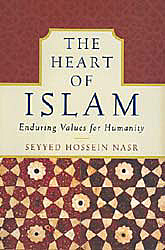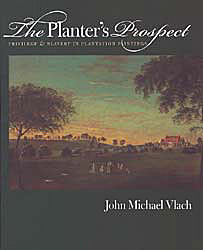|

Understanding Islamic Faith
 As a grieving America responded to the Sept. 11, 2001, attacks on the World Trade Center, the Pentagon, and in Pennsylvania, a misguided and sometimes violent backlash against Muslims and the Islamic faith occurred in America. As a grieving America responded to the Sept. 11, 2001, attacks on the World Trade Center, the Pentagon, and in Pennsylvania, a misguided and sometimes violent backlash against Muslims and the Islamic faith occurred in America.
It quickly became apparent to scholarly leaders that Americans had significant misconceptions concerning what Muslims believe. In order to dispel these misunderstandings, University professor Seyyed Hossein Nasr was commissioned by HarperCollins Publishers to write The Heart of Islam: Enduring Values for Humanity (HaperSanFrancisco, 2002).
To combat confusion surrounding the true beliefs of the world’s nearly 1.2 billion Muslims, Nasr outlines Muslim tradition and its core spiritual and social values of peace, compassion, social justice, and respect. He illustrates these cornerstones of the Islamic faith by drawing on narrations of his own life in Iran, the United States, and through his experiences as the first president of the Iranian Academy of Philosophy.
By drawing comparisons among Judaism, Christianity, and Islam, Nasr gives readers a common ground for the different religions, and he offers a starting point for understanding their shared values. He addresses the concerns and questions of non-Muslims to show them how the Islamic belief can positively advance global peace, despite the actions of a handful of extremist Muslim terrorists.
Nasr also tackles the tough question that many Muslims are facing of what went wrong in their societies to produce such acts of terrorism. He points out that, as people search for meaning and direction in their lives, the questions surrounding terrorism are not ones that just Muslims must ask but ones that Westerners must address as well.
Mark Juergensmeyer, author of Terror in the Mind of God and a sociology and religious studies professor at the University of California in Santa Barbara, says Nasr’s book will eliminate “any misconception that a few misguided activists speak for the whole of the faith” and will give a “new appreciation for the depth and richness that Islam brings to the world’s multicultural civilization.”

Art of the South
 Having previously studied the Southern plantation’s landscape from the perspective of the slaves who worked in the fields, American studies and anthropology professor John Michael Vlach once again places himself in the middle of the rolling hills and shady trees of the South to deconstruct the hidden meanings behind the nostalgic images of landscape paintings of southern plantations. Having previously studied the Southern plantation’s landscape from the perspective of the slaves who worked in the fields, American studies and anthropology professor John Michael Vlach once again places himself in the middle of the rolling hills and shady trees of the South to deconstruct the hidden meanings behind the nostalgic images of landscape paintings of southern plantations.
Vlach’s book, The Planter’s Prospect: Privilege & Slavery in Plantation Paintings (The University of North Carolonia Press, 2002) complements his previous book, Back of the Big House, by taking his readers around to the front of the “big house.” Here readers look up to the welcoming front porches of planters’ houses not from the perspective of a slave, but rather from the perspective of the six different artists commissioned by the 19th-century plantation owners.
Highlighting more than 120 landscapes, maps, lithographs and popular prints of planter’s homes, Vlach analyzes the collective works of both well-known and obscure artists against the backdrop of a southern social narrative. He shows how these artists confirmed the plantation owners’ authority by positioning viewers at the base of the houses so that their gaze is directed upwards, giving the homes a larger-than-life effect.
Likewise, Vlach points out that prior to the Civil War, slaves, who otherwise would have dotted the landscape as they labored in the fields, are entirely omitted. It is not until after the end of slavery that African Americans are shown working on the plantation—a powerful social comment, which Vlach says reveals the planters’ longing for a restored Black subservience.
“In their images of plantations, generations of white Americans chose to selectively represent, and then actively misremember, a world filled with profit and pain. This particular genre of paintings—so striking for its denial of the lives of African Americans in the Southern Gulag—has long needed a focused study,” says Peter H. Wood, a history professor at Duke University.

Getting What You Want
 Whether it is working out the kinks in a new job contract or haggling over the price of an antique dresser at a flea market, the mere thought of negotiating creates such a dread in most people that they often stop dead in their tracks without even attempting to barter for the best deal. But law professor Charles Craver argues that negotiating is a part of everyday work and home life and, in his book The Intelligent Negotiator (Prima Venture, 2002), he walks weary negotiators through the step-by-step process on how to get what they want. Whether it is working out the kinks in a new job contract or haggling over the price of an antique dresser at a flea market, the mere thought of negotiating creates such a dread in most people that they often stop dead in their tracks without even attempting to barter for the best deal. But law professor Charles Craver argues that negotiating is a part of everyday work and home life and, in his book The Intelligent Negotiator (Prima Venture, 2002), he walks weary negotiators through the step-by-step process on how to get what they want.
Drawing on his more than 25 years of experience in teaching negotiation strategies to more than 60,000 professionals, Carver explains the basic principles and rituals of negotiating, and he also provides a practical guide that breaks the process of negotiation into five stages.
Carver begins by outlining everything from what types of questions readers should ask, to what they should wear, and where they should sit during negotiations. He continues by explaining the importance of building rapport, setting the tone, and clearly exchanging information during negotiations. By using real life anecdotes, he shows readers how to apply the different negotiating techniques he describes.
“The Intelligent Negotiator is a must read for anyone looking to maximize his success in competitive business,” Leigh Steinberg, sports attorney and CEO of Assante Sports Management, says. “It brims with compelling strategies for achieving superior results.”
—Elizabeth Crawford
|